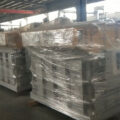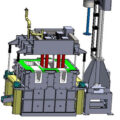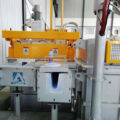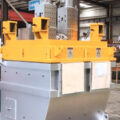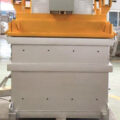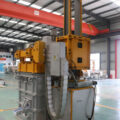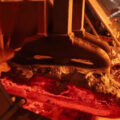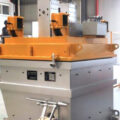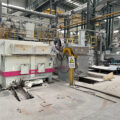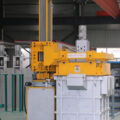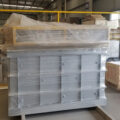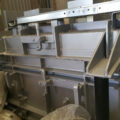The purity of aluminum melt is one of the main factors that affect the pass rate of aluminum foil. The slag inclusions in the aluminum melt are not cleanly handled, which not only causes pores and embrittlement, but also accelerates the corrosion and causes the strip to break when the aluminum foil is rolled, causing excessive pinholes. In the production of cast-rolling double-zero foil blanks, online degassing purification is necessary for the electrolytic aluminum liquid, so that the aluminum liquid can reach the standard of the cast-rolling double-zero foil blanks.
The purification principle of degassing box is to break the inert gas introduced into fine bubbles through a high-speed rotating rotor (rotor speed of about 500rpm/min). According to the principle of kinetics, the longer the contact time between the inert gas and the molten aluminum and the larger the contact area, the better the degassing effect. Therefore, it is required to break the bubbles as much as possible.

Through the principle of permeation and adsorption, the hydrogen and impurities in the aluminum liquid are purified again to achieve the effect of slag removal and degassing. Through online degassing and purification measures, the hydrogen content in the melt can be reduced to less than 0.12 ml/100gAl, which meets the requirements of double zero foil blank production.
After slagging and degassing through various refining methods, there are still 30 um ~50pm small slag inclusions suspended in the solution. The ceramic foam filter plate in the filter box mechanically blocks impurities and further removes the slag in the solution. Because ceramic foam filter plates are cheap, easy to purchase, easy to replace, and have a large filtering area, most manufacturers now use two-stage ceramic filter plates, 50PPI and 60PPI are the best. It should be noted that the junction between the filter and the filter box should be blocked tightly to prevent the aluminum liquid from leaking by-side and reducing the filtering effect.

